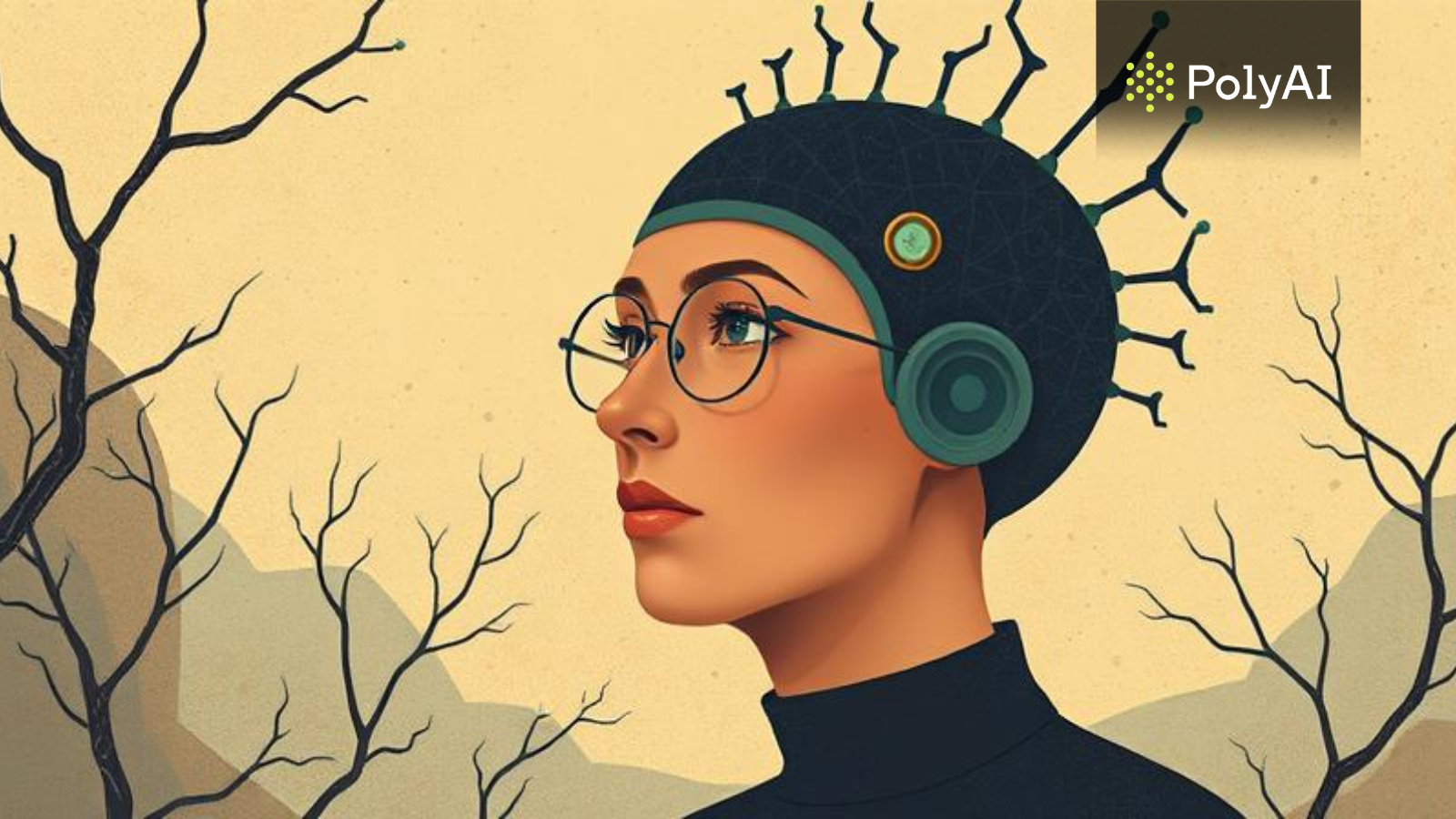
What is AutoGPT and How to Use It?
What if ChatGPT could prompt itself? Would it catch the internet’s attention?
Since ChatGPT dropped, it seems that, whenever a new AI tech becomes all the rage, it's T-14 days before it falls back into obscurity. The newest tool in the spotlight is the ubiquitous AutoGPT, which has taken the tech conversation by storm; use cases and promises are so widespread, it’s already hard to distinguish its prowess from overstatements. And it seems it might stay longer in our spotlight than other AI tools.
To gauge how much attention AutoGPT has gained in the AI and developer communities, it has over 47.1k stars and 6.3k forks on GitHub as of April 2023. That’s around a quarter of the ratings that the 2022 war film Im Westen nichts Neues has right now on IMDB. Staggering figures, considering AutoGPT has been out for only a few weeks.
What is AutoGPT?
AutoGPT uses deep neural networks to generate high-quality, human-like text (and thus, instructions) without the need for human input or supervision. This means it can be used to automate a wide range of tasks, from writing product descriptions and news articles to composing emails and chatbot responses or to programming a Tetris lookalike. And the best (or most alarming) news is that it’s simple to set up.
Below, we will explore the potential applications and benefits of AutoGPT for jobseekers. Since the uses and promises of AutoGPT are so broad, we've focused simply on the applications in tech.
Setting up AutoGPT
Before diving into the installation, gathering all the required tools is crucial. You'll need a text editor, a development container, Git, Python, and an OpenAI API key. Here's a brief overview of how to obtain each of these components.
1. Download a text editor and development container: A popular choice for a text editor is Visual Studio Code (VSCode), which you can download on their landing page. After installing VSCode, you'll also need a development container. Go to the Marketplace website and click the installation button to access it in VSCode. The development container will help you create a streamlined and efficient environment for working with AutoGPT.
2. Download Git: To manage and transfer files efficiently between your computer and GitHub (where AutoGPT is hosted), you'll need Git. If you don’t have it already, download Git for Windows. This tool lets you grab files from GitHub and quickly transfer them to your computer. We’re sure you have Python already, so we’re skipping that step.
3. Obtain an OpenAI API key: To use AutoGPT, you'll need an OpenAI API key. Visit OpenAI's Settings website and click “View API Keys.” Create a new secret key, and you can proceed to the installation detailed on GitHub.
An option that plenty of users have pointed towards is AgentGPT, an AutoGPT running on browsers. You’ll still need the GPT-4 API key. Other users even claim they can get it running on their iPhones, so check socials for updates — it might run on a Game Boy Colour anytime soon.
Overall, running AutoGPT requires a certain level of technical expertise and access to specialised resources.
Potential applications and benefits
With so many possibilities unravelled by an AI that can give instructions to itself, we’re focusing on current and potential uses for software engineers seeking employment.
Code generation, natural language descriptions, and documentation are all (somewhat obvious) processes that software developers can now automate with AutoGPT. As a result, developers may be able to delegate the task of writing code or documentation to the model, saving them energy and sparing their fingertips.
Massive Update for Auto-GPT: Code Execution! 🤖💻
— Significant Gravitas (@SigGravitas) April 1, 2023
Auto-GPT is now able to write it's own code using #gpt4 and execute python scripts!
This allows it to recursively debug, develop and self-improve... 🤯 👇 pic.twitter.com/GEkMb1LyxV
But productivity and programming are not only about getting documentation into a pretty state. Here are six exciting use cases where software engineers are leveraging AutoGPT to enhance their productivity, perform market research, and even create websites.
1. Self-fulfilling to-do lists
Software engineers can use AutoGPT to create to-do lists that not only outline tasks, but also execute them automatically. For example, AutoGPT can be instructed to spot a bug, commit a GitHub update to a repository, and report the issue on Slack or via email. Browse through The Do Anything Machine for a self-declared “to-do list that does itself” and tell us if it also does the laundry — we’re asking for a friend.
Over the weekend I finished the to-do list that does itself.
— Garrett Scott 🕳 (@thegarrettscott) April 11, 2023
Everytime you add a task, a GPT-4 agent is spawned to complete it. It already has the context it needs on you and your company, and has access to your apps.
It’s called the Do Anything Machine (Link in thread) pic.twitter.com/4Mn7cf67va
2. Automatic market research for jobseekers
While bootstrapped startups will primarily use this AutoGPT function, software engineers can adapt the initial goals to conduct market research to gain insights into potential employers. After all, finding a job is also about market research. By rephrasing the AI's goals, engineers can pick an ideal company for a “dream job” of sorts and then identify a company's main competitors, discover their preferences for hiring developers, and use this information to their advantage during job searches or negotiations. Or it could also lead developers to instead focus on selling waterproof shoes.
Whoa.. still not convinced of AI Agents? This might change your mind...
— Sully (@SullyOmarr) April 9, 2023
I pretended to be a fake shoe company and gave AutoGPT a simple objective:
- Do market research for waterproof shoes
- Get the top 5 competitors and give me a report of their pros & cons
Here's how it went: pic.twitter.com/mFttG4PXrk
3. Build web apps to boost your resume
A first impression might make it evident that glistening websites might be cake for AutoGPT, but users show us it can also be employed to create more complex web applications from scratch. For example, it can design a login/signup page, style it using Bootstrap, create a Flask API for login/logout, and develop a local JSON database. The frontend/backend schism is suddenly looking less far apart than ever.
Had AutoGPT make me a more complicated website, from scratch this time:
— Sully (@SullyOmarr) April 8, 2023
it:
- created login/sign up page
- styled it with bootstrap
- created flask api for login / logout
- created a local json database
Took ~10 minutes at a cost of $0.50. More examples coming pic.twitter.com/iwU16vjsRh
4. Transforming your resume into a site for personal branding
Personal branding, we have explored, is crucial for promoting a software engineer's profile in the job market. AutoGPT can transform an engineer's CV into a visually appealing landing page, showcasing their skills, experience, and achievements. With this custom website, engineers can increase their visibility and stand out from the competition. Software engineers can also ask the AI tool to create a professional-looking headshot for social networks.
5. Automated job applications
While not yet implemented, the possibility of using AutoGPT to apply for jobs automatically is an exciting prospect. AutoGPT could streamline the job search process, identifying suitable positions and submitting tailored applications, freeing up time for software engineers to focus on honing their video conference game. It’s also a quick way to enact the “the more, the merrier” adage: most of your applications won’t even be considered, so better leverage this tool to get mass dispatches out there.
Has anyone made a JobApplicationGPT bot to automate the job application project, chatGPT is helpful to streamline cover letter drafts but I feel like AutoGPT could fully automate this process. DM me if you're aware of anything like this. #ChatGPT #AutoGPT
— Sean Chapman (@Seanster41) April 17, 2023
6. Data analysis for decision-making
While the social media sphere has already brought forward AutoGPT for financial analyses, how about using it for analysing software-related data? AutoGPT can certainly assist software architects or in-house data scientists in data analysis tasks, scanning and interpreting data to propose new action plans. Here are some specific examples of how AutoGPT can assist software engineers in their work:
- Performance Analysis: AutoGPT can analyse performance metrics and logs, identifying bottlenecks or areas where optimisation is required.
- Feature Prioritisation: Based on user feedback, software usage data, or market trends, AutoGPT can help software architects determine which features or enhancements should be prioritised in the development roadmap.
- Predictive Maintenance: AutoGPT can analyse system logs and operational data to predict potential failure points or areas of the system requiring maintenance. By proactively addressing these issues, software architects can reduce downtime and improve overall system reliability.
- Code Review Assistance: By analysing commit histories and code changes, AutoGPT can help identify potential issues, such as code duplication or inconsistent coding practices.
- Resource Allocation: AutoGPT can analyse project data, timelines, and team performance metrics to provide recommendations on allocating resources more efficiently. This can help software architects make data-driven staffing, budgeting, and project management decisions.
Even though GPT-4 models can probably do all these tasks, the benefit of doing it with AutoGPT is that it can perform it recurrently.
It is important to note that the technology is still in its early stages and requires significant technical expertise and resources to implement effectively. Users have pointed out that certain prompt mistakes will get the agent stuck in a loop.
Installation complete, what’s next?
AutoGPT is a game-changing technology that has the potential to transform the way we work and interact with technology. By automating repetitive tasks and generating high-quality text, AutoGPT can free up employees to focus on more creative and strategic activities. That's what we are aiming for with our AI driven job matching algorithm.
So, if you are a tech worker or a developer looking to stay ahead of the game, now is the time to start exploring the world of AI and deep learning. Who knows, you may be the next innovator to create the next breakthrough technology that changes the world.


